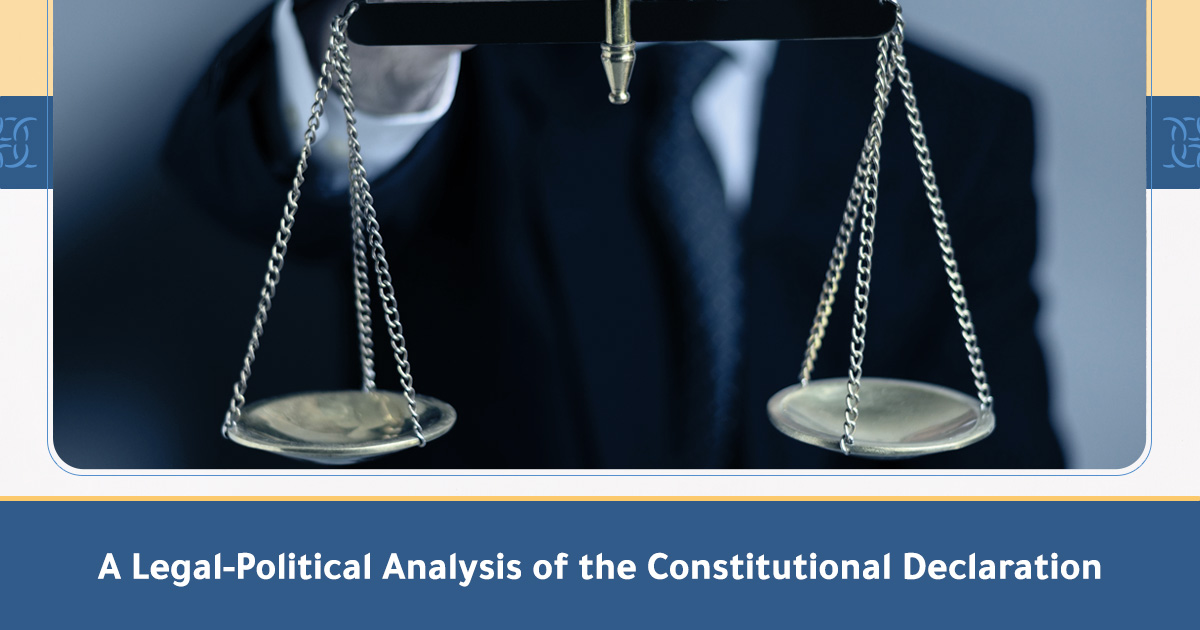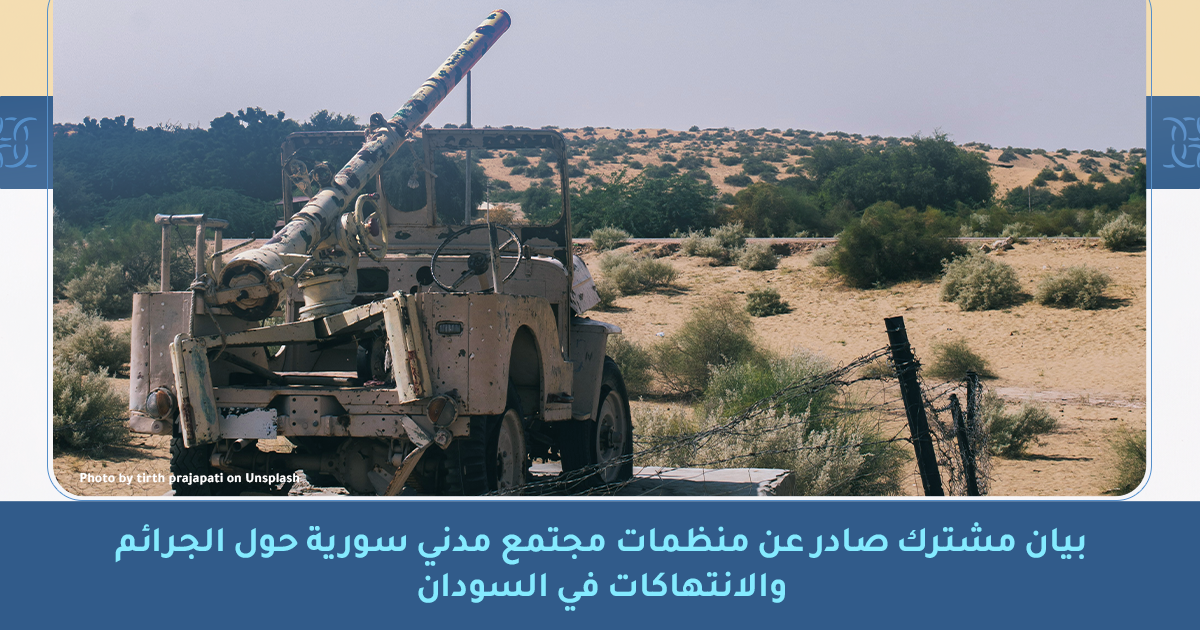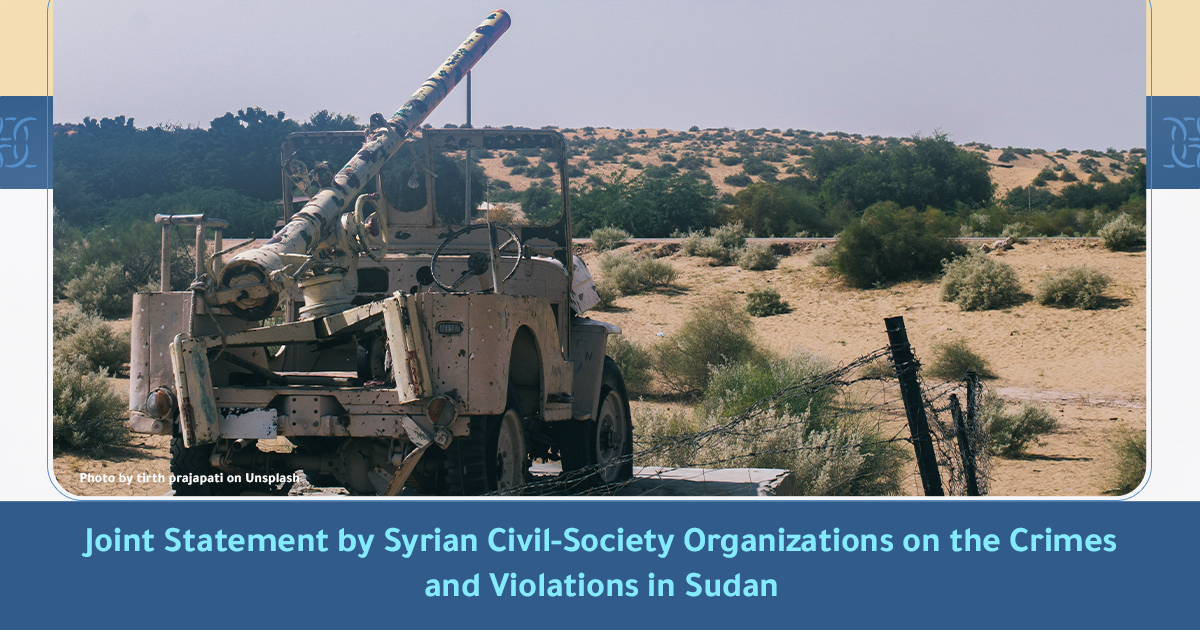One Step Forward… Two Steps Back
A Legal-Political Analysis of the Constitutional Declaration
The Syrian case is not unique in the annals of history: a popular revolution morphing into an armed conflict—verging on civil war—fueled by regional powers, and culminating in the military victory of a particular faction. This sequence often yields a form of military legitimacy that retroactively justifies itself through the revolution. The typical trajectory unfolds as follows:
- A revolution begins as a grassroots uprising against the existing regime.
- It gradually transforms into an armed confrontation between the regime and various opposition forces.
- Eventually, a dominant military faction emerges, either toppling the regime or gaining control over large swaths of territory.
The outcome is a state of military dominance that seeks to cloak itself in revolutionary legitimacy. Such a dynamic often leads to:
- The erosion of popular legitimacy: The principle of legitimacy derived from the people’s will is sidelined in favor of what becomes a “legitimacy of arms.”
- The reproduction of authoritarianism: Whether in the hands of a centralized army or dispersed armed factions, tyranny is often reconstituted—particularly during the transitional period.
- Dependence on external support: Victorious factions frequently rely on international backing to consolidate power, rendering them susceptible to political and economic dependency.
At dawn on December 8, 2024, widespread feelings of hope and relief swept across the majority of Syrians following the collapse of the former authoritarian regime. This came after more than a decade of resistance, endurance in the face of grave atrocities and violations, the displacement of millions, the loss of hundreds of thousands of lives, and the ongoing plight of tens of thousands of missing persons.
The forward-looking statements issued by the Military Operations Command—promising non-retaliation, justice and dignity for all Syrians, and a break from the practices of the previous regime, while pledging to build a state founded on law and justice—were perceived as a genuine step forward.
In light of these developments, the Military Operations Command could have issued a constitutional declaration from the very first day following the regime’s fall—defining the structure and powers of the new authorities, and outlining the immediate priorities. Instead, the Command, represented by the leader of Hay’at Tahrir al-Sham, Mr. Ahmed Al-Sharaa, announced its intention to establish governance grounded in the principles of popular legitimacy, through a series of foundational steps—most notably the convening of a Syrian National Conference. This conference was meant to produce the framework for the transitional phase. Meanwhile, the Command granted itself caretaker authority for a period of three months, during which the conference would be held and its outcomes used to shape the path forward.
However, developments took a different turn. On January 29, 2025, the Military Operations Administration convened the so-called Victory Conference, bringing together leaders of 18 armed factions. The conference concluded with the appointment of Mr. Ahmed Al-Sharaa as transitional President of Syria, authorizing him to perform the functions of the head of state, granting him full executive powers, and delegating to him the formation of a temporary legislative council.
The conference also produced sweeping decisions: the dissolution of the Baath Party and all parties of the National Progressive Front, the disbanding of the security apparatus and the Syrian army, the dissolution of the People’s Assembly, the annulment of the 2012 Constitution, and the dismantling of all armed factions and revolutionary, political, and civil bodies—with plans to integrate them into newly established state institutions.
At a time when the current administration was expected to initiate consultations with political actors, societal forces, and civil society groups to organize a Syrian National Conference—consistent with previous promises—it instead took a step back. The planned conference was reduced to a consultative gathering under the name National Dialogue Conference. Its final statement—reportedly pre-drafted—was then adopted as the basis for legitimizing subsequent measures, chief among them the issuance of the Constitutional Declaration.
On March 2, the Syrian Presidency announced the formation of a committee of legal experts tasked with drafting the text of the Constitutional Declaration, in accordance with the core parameters established by the Presidency. The committee completed its work and submitted the draft to the Presidency on March 13. The declaration is to be promulgated by the President and enter into force upon its publication in the Official Gazette.
To read the full text, please click on the following file.






